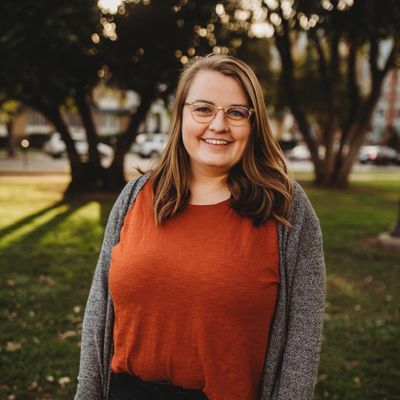Flying in June, out of any airport in the DelMarVa district, is a risky proposition. Sure enough, my flight out of Dulles was delayed, as our plane (coming in a little late from Italy) circled and circled above as the FAA weighed safety concerns below. Three hours later, we were finally underway. Sadly, my layover in Germany was only three hours. Adventures ensued, let’s just put it that way. However, between David’s international experience and savvy, and the kindness of all the strangers I met, asking for help, I am now here, a day later, and already loving the experience.
Today happened to be free for everyone, so I didn’t miss the first day of the dig (hooray!) and tonight’s lectures on the history and culture of Akko, and the do’s and don’ts of an archaeological excavation, have prepped us well.
For history buffs, here’s a short summary I found on the City of Akko’s official home page
“Akko (Acre) is a living city, which has existed continuously for about 4,000 years. Its beginning was in Tel Akko, more commonly known as Napoleon Hill. From the Hellenistic period onwards the city expanded west to the area that later became the Crusader and Ottoman city. The following historical review refers to the area known today as Old Akko and is based entirely on the “History of Akko” by Nathan Shore, unless noted otherwise.
“Hellenistic Period
From the times of Alexander the Great (333-332 BCE) Akko enjoyed the same status as the Phoenician cities Tyre and Sidon, maintaining a direct connection with the Greek government. The use of coins was common in Akko and the local mint operated for about 700 years, until the fourth century CE. Akko has the longest and richest numismatic history in Israel.
“From 310 BCE, under Ptolemaic rule, Akko apparently received the status of Polis and was called “Ptolemais”. The beaches of Akko appear in Greek sources of that period as a source for sand used in glass production. Akko reflects well the Hellenistic influence in Syria and Israel; as the largest coastal city in Israel at the time, Akko kept expanding in the peninsula area ideal for trading and gained strong political and economic status.
“Roman Period
During the Roman period Akko’s autonomous status as a Polis persisted. Many Jews settled in Akko in the beginning of this period and the city was connected to the history of the Jews in Israel throughout the Talmudic period. In the early Christian period the Apostles Paul and Peter also stayed in Akko. During this period a long breakwater was built to create a safe harbor, which was Akko’s main source of economic prosperity for about 1,000 years.
“Byzantine period
Starting in the fourth century CE, the Byzantine period marks the strengthening of the Greek influence in Akko. The Tel settlement was abandoned and the economy continued to be based on sea trade. Following the great Jewish revolt of 614 Akko was the first coastal city to be captured. The Jewish community that flourished in Akko was apparently destroyed and the city remained abandoned.
“Early Arab period (638-1104)
The beginning of the Arab period was marked by re-changing of the city name to Aka – its original name in the Arabic form. The elite class in the city were mostly Christians. Yet a continuous process of conversion led to a reinforcement of the Islamic ruling class.”
According to Judges 1:31, the tribe of Asher was given the land of Akko as part of its inheritance in the Lord. After Jesus’ resurrection, the apostle Paul passed through Akko, a major port city on the Haifa Bay, then as today, during his mission trips. (In Acts 21:7 Akko is called Ptolemais, the name it was given in 310 BCE.)
Akko became the gateway to the Holy Land for the Crusaders, where they expanded the peninsula, built the city we see today, and named it the Capital of the Latin Kingdom of Jerusalem. In 1291 Muslim armies destroyed Akko and drove the Crusaders out, leaving the city all but abandoned until the 18th century, when a Muslim Bedouin Sheik decided to move his capital to Akko, and rebuilt the original structures. Today, as you walk through old town, it looks just as it did a thousand years ago.
One of only six “mixed” cities in Israel, Akko has a robust blend of Muslim Arabs, Christian Arabs, Jewish Israelis, and Baha’i–in fact, the old Ottoman prison in Akko is considered one of the Baha’i’s holy sites, as their founder was held captive there. Having been named a World Heritage Site in 2001, Akko is now beginning to grow as a tourist destination.
After our two intro lectures on the city of Akko, we got some important instructions on how to proceed at our excavation site. Here are just a few pointers, in case you find yourself on a dig, soon:
- “Bioturbation” the disturbance of sedimentary deposits by living organisms. We, evidently, have two kinds of moles, and plentiful populations of geckos, a variety of lizards (including “legless” lizards…Yes. They are not snakes. They are lizards without limbs. I know.) But yes, we also have snakes, including the Palestinian Viper. We also have bees, wasps, spiders, and…scorpions. Yikes.
- Everything is measured by the metric system.
- Beware of getting too excited when you unearth rocks seemingly all in a tidy row. Sometimes rocks just do that. It’s probably not an ancient wall.
Tomorrow we will remove the 5,000 sandbags left the end of last summer to protect the site. (Not kidding. Five. Thousand), and hopefully not disturb any “bioturbs”!
[Paintings of the Templars from the exhibition in the Templars Crusader Tunnel, an underground passageway in Akko by Erik Törner | Attribution-NonCommercial-ShareAlike 2.0 Generic (CC BY-NC-SA 2.0)]
